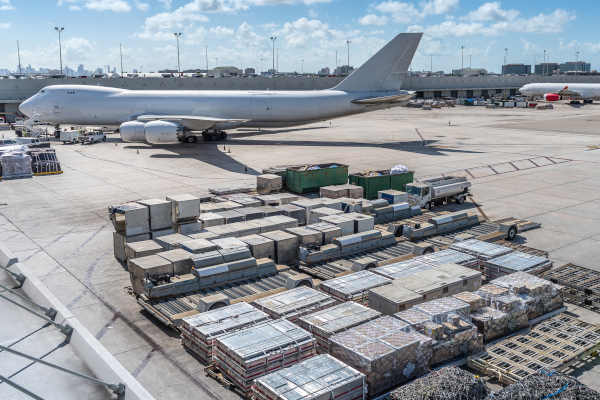Global shipping rates are skyrocketing as Houthi attacks in the Red Sea continue. Carriers avoiding the area are suffering from longer transit times around Africa, leading not only to higher costs but delayed deliveries and disruption throughout the global supply chain.
Retailers especially are feeling the hurt, with delayed product deliveries of spring and summer goods, including clothing, footwear, home goods, electronics, patio furniture and pool supplies.
With the approach of Chinese New Year in February, retailers are also feeling a time crunch as they work to get their product out of China before the country shuts down. According to Matthew Burgess, vice president of global ocean services at C.H. Robinson, the ocean market typically sees volume increases several weeks before the holiday as companies move more freight before businesses across Asia go offline for at least two weeks
“These expected volume increases will compound delays that the logistics market is already experiencing,” he said.
Airfreight and LTL ocean shipping to expand
To combat these logistical challenges, retailers are now looking at alternative delivery methods.
With more than 500 vessels carrying seven million containers already diverted from the Red Sea Corridor, Rodney Manzo, founder and CEO of supply chain visibility platform, Anvyl, said the biggest players may choose to avoid ocean shipping altogether.
“What I see is instead of oceans, they’re doing air shipping, which increases the cost, but it decreases the time going from point A to point B,” said Manzo. “If it’s 30 to 45 days on a vessel, it takes you one to two weeks on a plane. That’s the smartest thing you can do if you’re financially able to do that.”
Burgess agrees that traditional air freight is an obvious alternative, but he notes that contingency plans can also include a combination of sea and air solutions, expedited inland services, transloading when cargo arrives at port, and less-than-container load (LCL). He recommends monitoring the spot market, which will provide a good indicator to monitor the industry-wide shift to other modes.
“Since this disruption escalated over the holidays, contingency plans are rolling out slower than usual, but we expect this to change quickly as people are back in the office,” he added. “While air and LCL capacity is easier to come by now, that may not be the case long term as shippers activate their contingency plans.”
Burgess continued that shippers shouldn’t only focus on individual locations or modes but must look across their entire supply chain and build risk mitigation strategies that support their business amidst an evolving geopolitical climate.
“Even if you’re not currently impacted by the disruption, starting conversations with your logistics provider now is crucial as delays will likely cascade to multiple areas of the supply chain, including surface transportation,” he said. “While disruption is not new in global shipping, each event is as unique as the supply chains operating in it. As the situation is evolving, contingency plans that include plans A, B and C are critical to keeping supply chains moving.”
Retailers may reach for COVID playbook
In addition to finding alternative shipping methods, Manzo expects retailers to take a page out of their pandemic playbook by increasing their safety stock.
Safety stock keeps more inventory in your warehouse, but it also can put a dent in your working capital. Temporarily increasing inventory can buffer retailers to these disruptions for now, but as the pandemic showed, it’s not a great long-term solution.
Manzo adds that while retailers who nearshored and diversified their supply chain during the pandemic are in a better position, these types of disruptions still cause challenges.
“Anytime you have something that’s super unforeseen, that creates a shock in the system… you’re not necessarily going to be ready for that, so there is always lag,” said Manzo. “It’s a supply chain bullwhip effect, essentially, so we’re kind of in some of that lag right now. But they’re way more capable and put more checks and balances in place than ever before.”
Manzo continued, “they’ve seen a disruption, they know what it is, they’ve done something to combat that disruption. That playbook is just being utilized now.”
SC
MR


More 3PL
- Services sector sees growth in October, reports ISM
- Managing inbound freight: What has changed in two decades?
- Inbound freight: Often a missed opportunity
- 2024 Warehouse/DC Operations Survey: Technology adoption on the rise
- Looking back at NextGen 2024
- Manufacturing again contracts in October, reports ISM
- More 3PL
Latest Podcast

 Explore
Explore
Business Management News
- Retail sales see gains in October, reports Commerce and NRF
- Balancing green and speed: Home delivery insights from the pandemic era
- AdventHealth named top healthcare supply chain by Gartner
- Unlocking retention: The role employee engagement plays
- Can supply chain managers embrace an entrepreneurial mindset?
- Challenges to ESG reporting
- More Business Management
Latest Business Management Resources

Subscribe

Supply Chain Management Review delivers the best industry content.

Editors’ Picks




